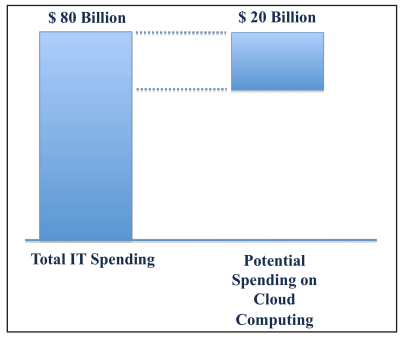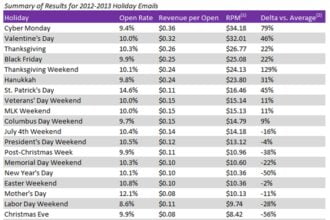It has been nearly six years since then-U.S. CIO Vivek Kundra issued his Federal Cloud Computing Strategy. Typically referred to in Federal circles as “Cloud First” because of its edict to move workloads to public cloud providers instead of building more government data centers, the February 2011 strategy document was focused on cost reduction. In fact, the only chart from the Executive Summary deals exclusively with cost, as opposed to the many other benefits of cloud computing:
As a result, if you ask most Federal agencies to pick their primary benefit for moving to the cloud, they are likely to say, “cost savings.” In their report card on CloudFirst issued last March, the Government Accountability Office would agree with that as the primary benefit, as they stated: “19 of the 24 agencies reported achieving an estimated $2.8 billion in cost savings and avoidances from fiscal years 2011 to 2015.”
But is that the right benefit to measure moving forward? Are Federal agencies seeking the wrong primary benefit and missing the point behind the true advantage of cloud computing?
Comparing to the Commercial Sector
The cloud is not just for hosting applications like e-mail and collaboration tools in the hopes of reducing costs (and satisfying an unfunded mandate). In fact, in some cases, it might cost more to host an application in the public cloud than it would in a private data center. For example, a large commercial dot-com company in the D.C. area told me last year they were in the process of moving all of their applications back to their data center from a public cloud provider.
If you talk to large commercial companies about why they’re adopting cloud, they will likely cite agility as the primary benefit. Last February in one of their regular surveys on cloud usage, IDC found that “more respondents are identifying business-related metrics as a key driver of Cloud adoption, such as improved business agility and more support for business-related programs.”
So what commercial enterprises have really learned is that cloud gives you flexible infrastructure to increase your “speed to market” for deploying new applications or services. Cloud First fails if we have some meaningful percentage of Federal applications in public cloud, but it’s still taking one to two years to build and deploy a new application or a major piece of functionality.
Instead, the Office of Management and Budget and agency leadership should consider measuring agencies on:
- How many deployments per week?
- How many automated tests run weekly or daily?
- What is the average requirement to deployment lead time?
- Mean time to recover from a failure?
These are the types of measures that better show how well an agency is delivering new capabilities to meet the needs of their stakeholders—instead of how many applications are in the cloud. In other words, agencies should be DevOps First.
DevOps First
Enough time has passed since the office of Federal CIO issued its Cloud First initiative that it is time for the next occupant of that role to consider creating a second Federal cloud policy called DevOps First. What would that mean, exactly?
One of the best resources for understanding the concepts of DevOps is the book The Phoenix Project by Gene Kim, Kevin Behr, and George Spafford. It tells the story of an IT manager who has 90 days to overhaul a set of software development and delivery processes or have his team face being outsourced. In accomplishing that, he puts the three core DevOps principles to work:
- Systems Thinking — Instead of focusing on the performance of an individual piece of a software project, emphasize the end result the entire system is trying to achieve.
- Amplify Feedback Loops — So that corrections happen more quickly and more often.
- Culture of Continual Experimentation and Learning — Faster cycle times enable faster failure recovery, which makes experimentation a regular occurrence instead of an exception.
The metrics that fall out of that have a lot more to do with the number of weekly releases, the speed at which those releases complete from start to finish, and the customer response to those changes. Instead of having anything to do with cost, the performance metrics have to do with agility.
A recent Gartner survey found that by 2016, 89 percent of companies expect to compete mostly on the basis of customer experience, versus 36 percent four years ago. The public expects easy-to-use services, and DevOps approaches to software engineering is how commercial companies keep up with the speed of that demand. Our government should be no different and, based on the success of Cloud First with its cost focus, that now requires a similar commitment from Federal leaders. A DevOps First declaration would look at this mission strategy, and how it is supported by faster deployment of digital services, which would unlock the real benefit of cloud for the public to enjoy.










